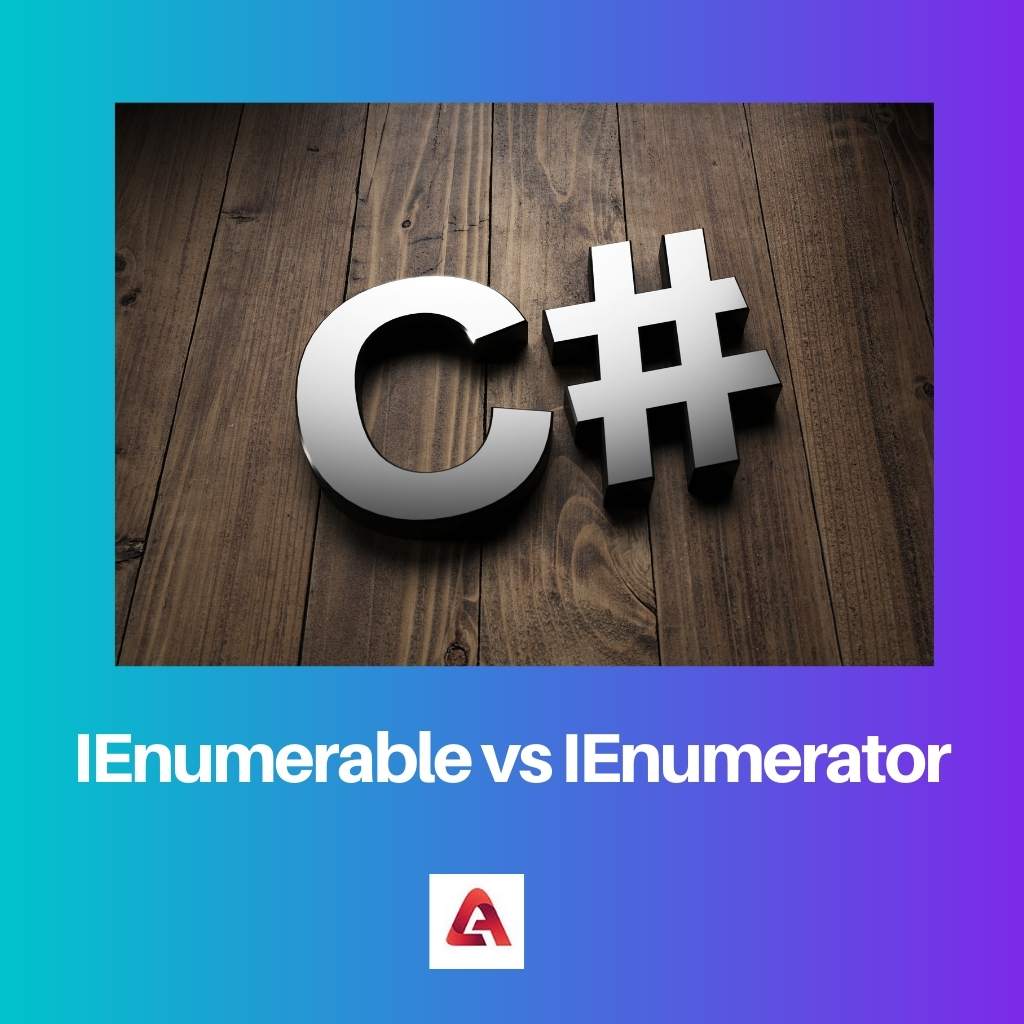IEnumerable and IEnumerator are both interfaces available in C#. The former is a module, whereas the latter is an object.
IEnumerable produces IEnumerator. Here GetEnumerator is used to get IEnumerator, for each loop is used to generate code that uses Enumerator. An enumerator is different from IEnumerator as IEnumerator is an interface. The enumerator implements it.
Key Takeaways
- IEnumerable is an interface that enables iterating over a collection of objects, while IEnumerator is a class that implements the IEnumerator interface and provides methods for traversing a collection.
- IEnumerable provides a single method (GetEnumerator) that returns an IEnumerator object, while IEnumerator provides methods for moving through the collection (MoveNext) and retrieving the current object (Current).
- IEnumerable is used to create collections that can be iterated over, while IEnumerator is used to traverse those collections.
IEnumerable vs IEnumerator
The difference between IEnumerable and IEnumerator is IEnumerable works for the generic interface, and IEnumerator works for all non-generic interfaces. IEnumerable points to an object which can be enumerated, but IEnumerator is implemented using each statement for iteration. The IEnumerable interface uses the IEnumerator for the iteration of all the elements used for each statement.

IEnumerable is used to find an object which is used as an interface. It is used for the iteration of all the elements in the collection.
The iteration process makes it easier to traverse in the collection. It acts as an object. GetEnumerator is a method that is used for the implementation of the IEnumerator interface.
IEnumerator has two methods, Reset() and MoveNext(), and has an extended property which is known as Current. MoveNext() is a method that produces a Boolean value that points out the end element of the list. The reset method makes the enumerator its default position.
Comparison Table
| Parameters of Comparison | IEnumerable | IEnumerator |
|---|---|---|
| Type of Interface | Generic | Non-generic |
| Number of Methods | One | Two |
| Returns | IEnumerator | None |
| Cursor State | Cannot retain | Can retain |
| Product | Enumerated object | For each statement result |
| Way of Writing | Abstract | Concrete |
What is IEnumerable?
This is an interface that is implemented by an enumerable class. The whole collection in c# can implement an IEnumerable interface. It returns IEnumerator. It does not change as per the access specifiers used in the code.
IEnumerable has a method which is known as GetEnumerator. This implementation is done only inside the class.
The iteration process makes it easier to traverse in the collection. It acts as an object. GetEnumerator is a method that is used for the implementation of the IEnumerator interface.
IEnumerable is known as a generic interface as the code is written very smaller because it needs only one-time implementation. It does not matter how many constructors are used in the code implementation for iterating all the elements.
The code has low maintenance as the modification to the code is under one platform and does not require any extra changes. It uses abstraction for the iteration of all the elements in the array.
It uses an IEnumerator iterator which is used for the iteration of all elements. As it is a generic class, it easily does the iteration of the elements in the array. It provides a common interface. It is used in all non-generic classes.
What is IEnumerator?
It has two methods to implement iteration of all the elements in the collection. It has two methods which are MoveNext and Reset. MoveNext is a method that points out that the iteration has not reached the last element of the collection.
The reset method does the same thing as it sounds. It points out to again start the iteration after the previous iteration is done till the last element of the array.
Last, the one object is Current, which gives the current element as the result of iteration. It has some specific access to its elements. It only provides read-only access to its all array.
The IEnumerator calls the current property, which is responsible for returning the element in the currently used list. It uses two methods and the property for the iteration of the object.
Each statement uses the array list, starts iteration by moving forward, and uses one of the methods. IEnumerator cannot return IEnumerable.
It can easily get back the cursor’s current state. IEnumerator uses a concrete way of writing. It starts iteration in the stack by iterating the first element of the stack and ending with the last element of the stack.
Main Differences Between IEnumerable and IEnumerator
- IEnumerable is used for the generic interface, but IEnumerator is used for the non-generic interface.
- IEnumerable has only one method, whereas IEnumerator has only two methods.
- IEnumerable can return IEnumerator, but IEnumerator cannot return IEnumerable.
- IEnumerable cannot retain the cursor’s current state, but IEnumerator can retain it.
- IEnumerable shows an enumerated object, whereas IEnumerator has one for each statement.
- IEnumerable is an abstract way of writing, but IEnumerator uses concrete writing.




